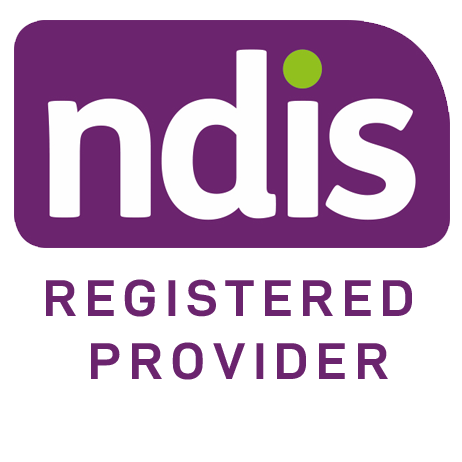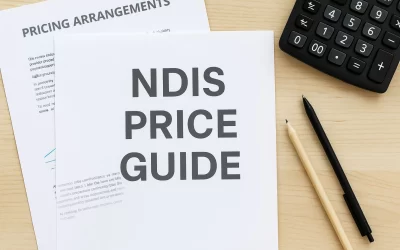Accessing your community, workplace, or essential appointments shouldn’t be a challenge — especially when you’re living with a disability. That’s why the NDIS Transport Funding system exists: to make travel easier, fairer, and more accessible for participants who cannot use public transport due to their disability.
But what exactly does this funding cover? How are the three transport support levels decided? And how does it connect with the broader NDIS Pricing Arrangements and Price Limits?
In this guide, we’ll explain everything you need to know about NDIS Transport Funding 2025–26, including eligibility, payment levels, and how to make the most of your plan.
What Is NDIS Transport Funding?
NDIS Transport Funding provides financial support for participants who face substantial difficulty using public transport because of their disability. This support helps people maintain independence and participate in work, education, and community life.
According to the NDIS official transport page, funding is designed to help participants get to and from:
-
Work, study, or volunteer commitments
-
Social, community, and recreational activities
-
Medical appointments and essential daily needs
Importantly, transport funding applies only to participants — not carers or family members transporting them for day-to-day commitments.
How Transport Funding Fits into NDIS Pricing Arrangements
Transport assistance is a key part of the NDIS support structure and works in line with the NDIS Pricing Arrangements and Price Limits.
The NDIA regularly reviews these arrangements to ensure fairness, consistency, and value for money. While transport funding specifically supports participant mobility, the Pricing Arrangements also outline how providers can claim for their travel time, such as when delivering in-home supports or accompanying a participant to community activities.
For a full breakdown of how price limits and travel rules work, you can also read our detailed guide: NDIS Price Guide 2025–26.
What Does NDIS Transport Funding Cover?
Transport supports are designed to help participants build capacity for independent travel and reduce barriers to community participation. Depending on your plan, your funding may include:
-
Personal transport-related aids and equipment (e.g., modified vehicles, mobility devices).
-
Training to use public transport independently.
-
Reasonable and necessary costs of taxis, rideshare, or private transport.
-
Transport to and from school or community programs for eligible students.
However, it’s important to remember that the NDIS does not cover transport assistance for carers or family members transporting participants for routine family commitments.
NDIS Transport Support Levels Explained
The NDIS provides three main funding levels for transport assistance. Each level reflects a participant’s engagement in work, study, or community life, as well as their ability to use public transport.
NDIS Transport Funding Support Levels (2025–26)
| Support Level | Yearly Funding Amount | Who It’s For | Purpose |
|---|---|---|---|
| Level 1 | $1,784 per year | Participants who are not working, studying or attending day programs, but want to build social and community access. | Helps you get out into the community, stay connected, and participate in everyday life. |
| Level 2 | $2,676 per year | Participants who are working or studying part-time (up to 15 hrs/week), or who attend day programs, recreation or social activities. | Supports mixed weekly travel needs — work, appointments, social, and community inclusion. |
| Level 3 | $3,456 per year | Participants who are working, looking for work, or studying 15+ hrs/week and cannot use public transport due to disability. | Helps fund reliable transport so you can maintain employment, education, or job-seeking activity. |
| Exceptional Circumstances | Higher amounts may be approved | Participants who need additional transport to keep a job or actively work towards employment. | Additional funding can be considered when transport is essential for ongoing work participation. |
Based on NDIS transport funding guidance for 2025–26. For full details, see
the official NDIS page on Transport Funding and the NDIS Pricing Arrangements.
How Does the NDIA Determine Transport Funding?
When deciding if transport supports are reasonable and necessary, the NDIA considers several key factors:
1. Relation to the Participant’s Disability
Transport funding must directly relate to your disability. If your difficulty with travel is caused by factors unrelated to your condition (for example, lack of public transport options), it may not be covered.
2. Value for Money
The NDIA compares the cost of providing transport with alternative supports that might promote independence — such as vehicle modifications or public transport training.
3. Family and Informal Support Capacity
The NDIA also looks at what’s reasonable for families, carers, and the community to provide, especially when assessing transport funding for children under 18. Parents are generally expected to manage a child’s daily transport needs unless the child’s disability requires additional assistance.
4. Goal Alignment
The funding must align with your plan goals — such as improving independence, increasing community involvement, or achieving employment outcomes.
What’s Not Covered Under NDIS Transport Funding
Certain transport-related costs fall outside NDIS responsibility, including:
-
Public transport concessions or ticket subsidies.
-
Maintenance of public transport infrastructure (roads, parking, or bus stops).
-
Travel for carers or family members.
-
Transport for day-to-day living costs unrelated to disability needs.
For example, if a participant can use public transport safely, NDIS funding is unlikely to cover private taxi trips for convenience.
ransport Funding for Children and Adults
The NDIS makes different considerations for children and adults when approving transport supports.
For Children
-
Parents are expected to meet most daily transport requirements.
-
Funding may be approved only when a child cannot use public or family transport due to disability.
-
Special circumstances (like school transport for a child with severe mobility issues) are reviewed case by case.
For Adults
-
Funding depends on the participant’s ability to travel independently.
-
Adults who cannot use public transport because of their disability can receive funding under one of the three transport support levels.
-
Exceptional funding may apply for those needing transport to access employment or skill-building opportunities.
How to Use and Manage Your Transport Funding
Transport funding appears under your Core Supports budget in your NDIS plan. You can:
-
Use it flexibly for taxis, rideshares, or community transport.
-
Choose how payments are managed (self-managed, plan-managed, or NDIA-managed).
-
Combine it with other supports, such as community access or capacity-building activities.
For example, if you use Premier Home Care’s Home Care Services for daily living assistance, your provider can also help coordinate transport arrangements that align with your goals.
Transport Funding and Provider Travel Costs
While participant transport funding covers your personal travel needs, providers may also claim limited travel time under the NDIS Pricing Arrangements — such as driving to deliver supports or accompany you to community activities.
To learn more about these travel claim rules, refer to our detailed guide: NDIS Price Guide 2025–26.
Premier Home Care’s Role in Transport and Support Coordination
At Premier Home Care, we understand that reliable transport is essential for independence, confidence, and community participation.
Our team helps clients navigate the NDIS system, plan their transport funding, and connect with safe, accessible travel options. We ensure every plan is:
-
Aligned with your personal goals
-
Compliant with NDIS pricing rules
-
Delivered with care, reliability, and transparency
We also offer:
Our mission is to help you live independently, access your community, and make the most of your NDIS plan.
Key Takeaways
-
NDIS Transport Funding supports participants who can’t use public transport due to disability.
-
Funding is offered at three support levels, depending on work, study, and activity status.
-
Exceptional circumstances can increase funding for employment participation.
-
Funding applies to participants only, not family members or carers.
-
All transport supports must be reasonable, necessary, and goal-aligned.
-
Providers can claim separate travel time costs under the NDIS Pricing Arrangements
Final Thoughts
The NDIS Transport Funding 2025–26 framework plays a crucial role in empowering participants to stay connected, engaged, and independent. Whether you’re traveling to work, school, or community activities, this funding ensures your mobility isn’t limited by your disability.
At Premier Home Care Sydney, we guide participants through every step of understanding and managing their NDIS plan — from transport assistance to home and respite care.
To learn more about the latest updates, visit our NDIS Price Guide blog or contact our friendly team today.



